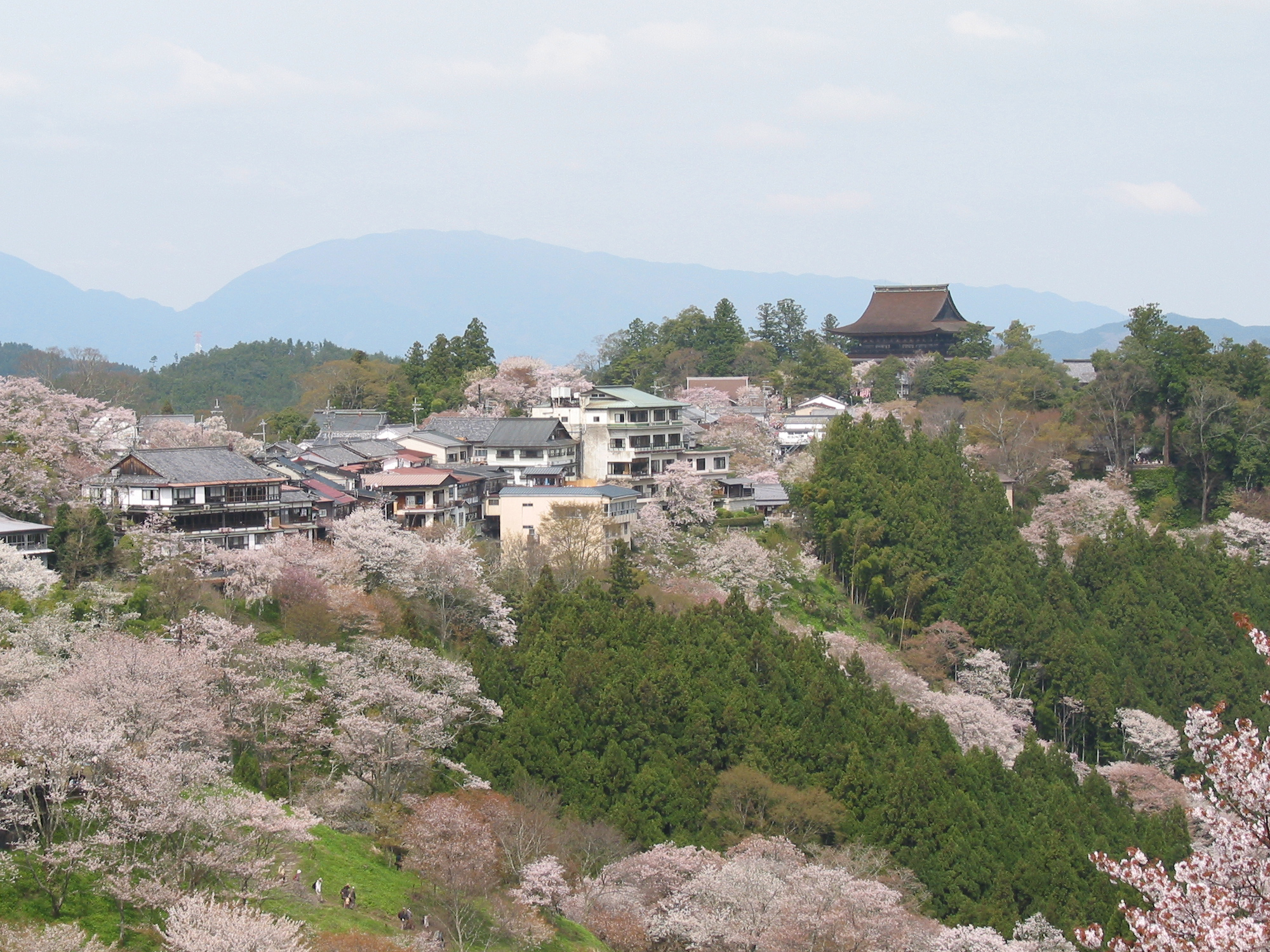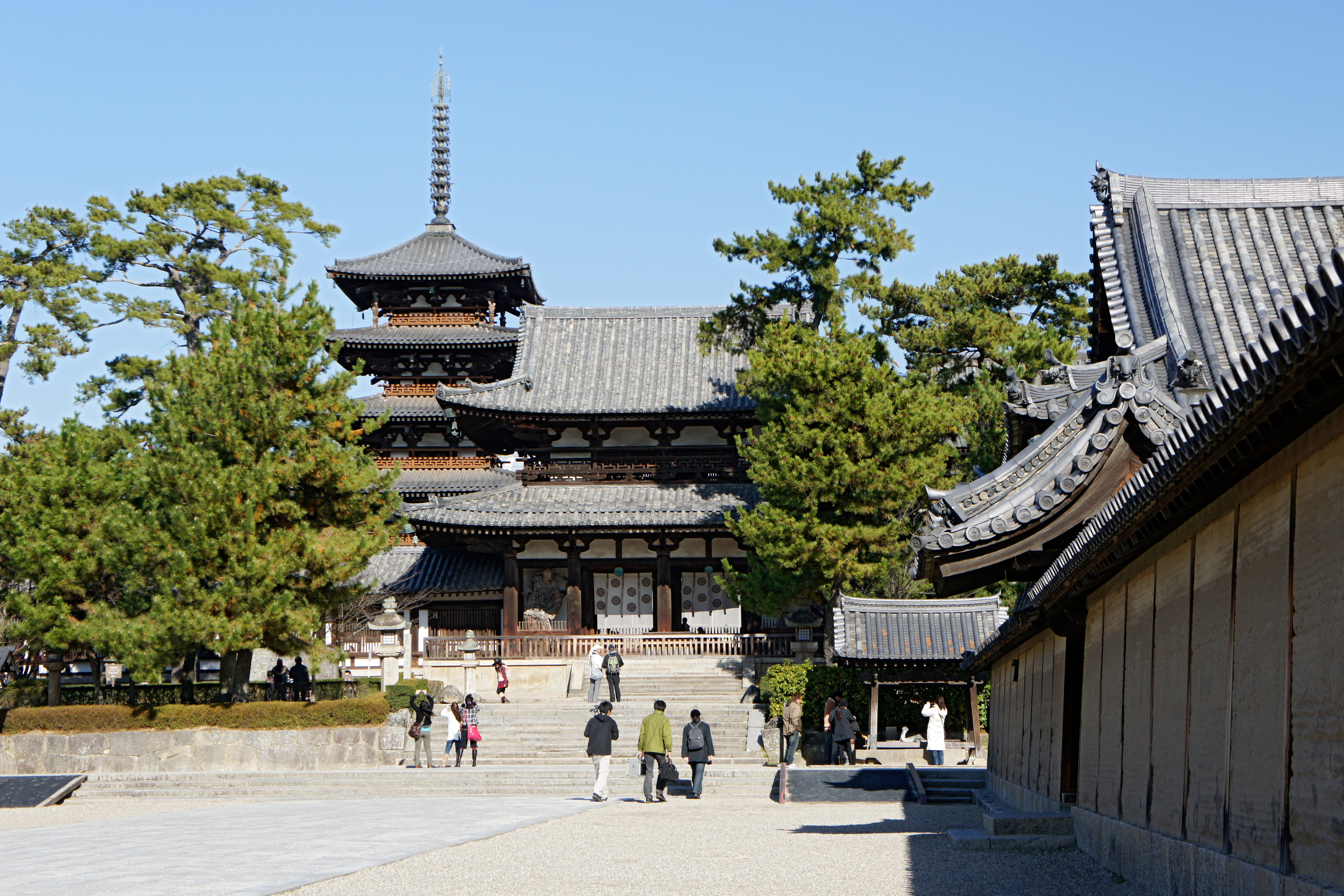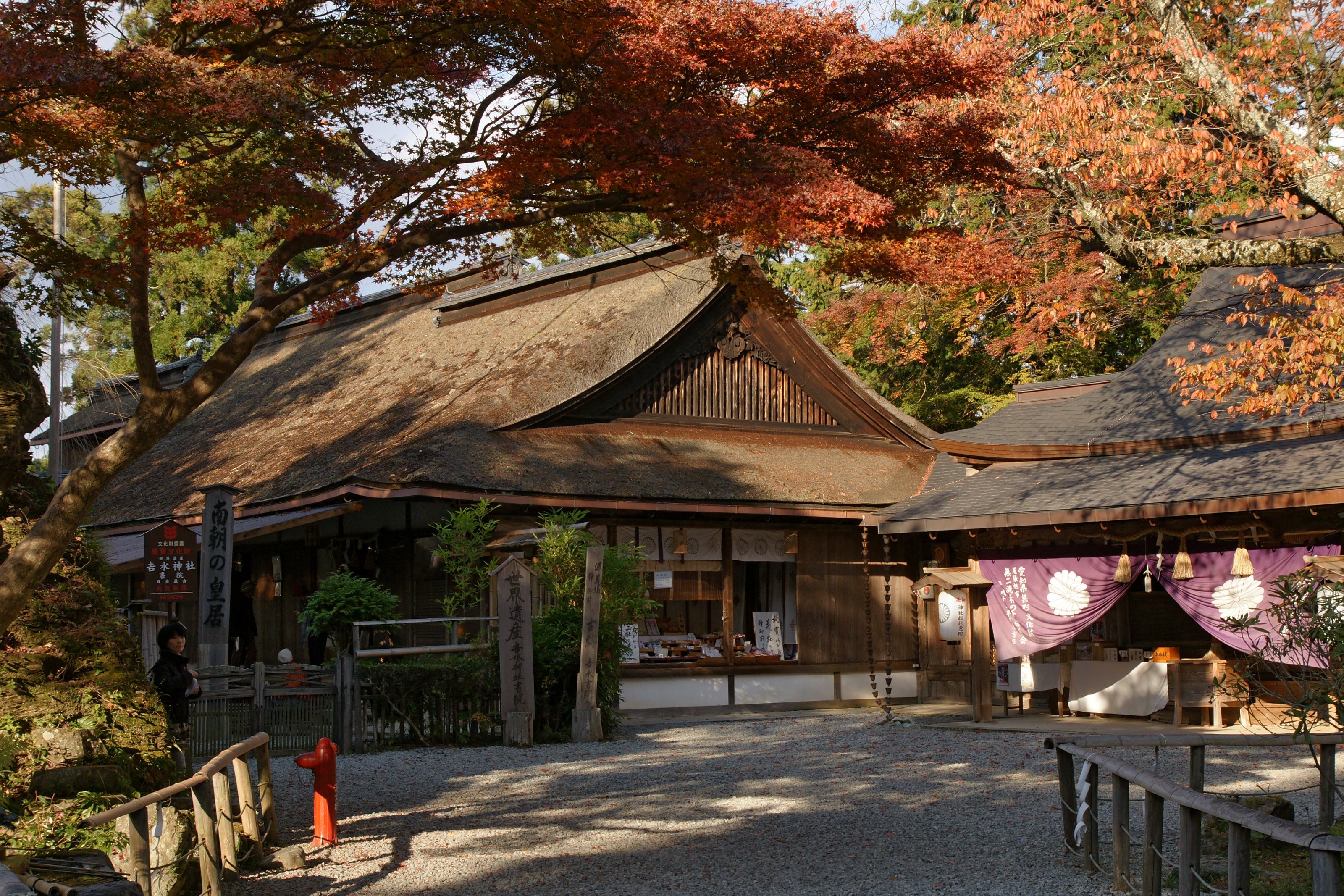|
Sacred Sites And Pilgrimage Routes In The Kii Mountain Range
Sacred Sites and Pilgrimage Routes in the Kii Mountain Range is a UNESCO World Heritage Site located on the Kii Peninsula in Japan. Selection criteria The locations and paths for this heritage site were based on their historical and modern importance in religious pilgrimages. It was also noted for its fusion of Shinto and Buddhist beliefs, and a well documented history of traditions over 1,200 years. The nature scenery on the Kii peninsula was also taken into consideration, with its many streams, rivers and waterfalls. Technically, independent structures at nominated temples and shrines were nominated for this distinction, and not the entire establishments. Sections of the trails were included for this nomination, but not the full length of their expanses. A total of 242 elements were selected from sites and pilgrimage routes for nomination. List of sites See also * Tourism in Japan * List of World Heritage Sites in Japan The United Nations Educational, Sc ... [...More Info...] [...Related Items...] OR: [Wikipedia] [Google] [Baidu] |
Kii Peninsula
The is the largest peninsula on the island of Honshū in Japan and is located within the Kansai region. It is named after the ancient Kii Province. The peninsula has long been a sacred place in Buddhism, Shinto, and Shugendo, and many people would visit from all over Japan as part of the Kumano religious practices. Overview The area south of the “ Central Tectonic Line” is called , and is home to reef-like coral communities which are amongst the northernmost in the world (apart from cold-water corals) due to the presence of the warm Kuroshio Current, though these are threatened by global warming and human interference. Because of the Kuroshio’s strong influence, the climate of Nankii is the wettest in the Earth’s subtropics with rainfall in the southern mountains believed to reach per year and averaging in the southeastern town of Owase, comparable to Ketchikan, Alaska or Tortel in southern Chile. When typhoons hit Japan, the Kii Peninsula is typically the worst ... [...More Info...] [...Related Items...] OR: [Wikipedia] [Google] [Baidu] |
Nara Prefecture
is a Prefectures of Japan, prefecture of Japan located in the Kansai region of Honshu. Nara Prefecture has a population of 1,321,805 and has a geographic area of . Nara Prefecture borders Kyoto Prefecture to the north, Osaka Prefecture to the northwest, Wakayama Prefecture to the southwest, and Mie Prefecture to the east. Nara (city), Nara is the capital and largest city of Nara Prefecture, with other major cities including Kashihara, Nara, Kashihara, Ikoma, Nara, Ikoma, and Yamatokōriyama. Nara Prefecture is located in the center of the Kii Peninsula on Japan's Pacific Ocean coast, and is one of only eight landlocked prefectures. Nara Prefecture has the distinction of having more UNESCO World Heritage listings than any other prefecture in Japan. History The Nara Prefecture region is considered one of the oldest regions in Japan, having been in existence for thousands of years, and is widely viewed as the Japanese cradle of civilization. Like Kyoto, Nara was one of Imperial ... [...More Info...] [...Related Items...] OR: [Wikipedia] [Google] [Baidu] |
Tenkawa, Nara
290px, Tenkawa Village Hall is a village located in Yoshino District, Nara Prefecture, Japan. , the village had an estimated population of 1,031 and a population density of 5.9 persons per km2. The total area of the village is . Geography Located in central Nara Prefecture, the area of Tenkawa is dominated by the Ōmine Mountain Range. It is home to the highest peak in the Kinki region, Mount Hakkyō (1,915 meters), and the Tennokawa River, the source of the Kumano River, flows through the area. Parts of the village are within the borders of the Yoshino-Kumano National Park and also part of the Sacred Sites and Pilgrimage Routes in the Kii Mountain Range World Heritage Site. Surrounding municipalities Nara Prefecture * Gojō * Kurotaki * Kawakami * Kamikitayama Climate Tenkawa has a humid subtropical climate (Köppen ''Cfa'') characterized by warm summers and cool winters with light to no snowfall. The average annual temperature in Tenkawa is 11.0 °C. The average an ... [...More Info...] [...Related Items...] OR: [Wikipedia] [Google] [Baidu] |
Ōminesan-ji
is an important temple of the Shugendō religion in the village of Tenkawa, Yoshino district, Nara prefecture, Japan. It is located at the Sanjōgatake peak of Mount Ōmine. Along with Kinpusen-ji, it is considered the most important temple in Shugendō. From the early Heian period to the present, women have been prohibited from entering the sacred mountain. The precincts were designated a National Historic Site of Japan in 2002. Overview According to tradition, the temple was established in at the end of the 7th century by En no Gyōja, the founder of Shugendō, a form of mountain asceticism drawing from Buddhist and Shinto beliefs. The main hall is located near the summit of Sanjōgatake (1719.2 meters), located in the middle of the Ōmine Mountain Range, and enshrines Zaō Gongen. While the main hall (Zaō-dō) of Kinpusen-ji on Mount Yoshino is called "Sange no Zaō-dō," the main hall of Ōminesan-ji is called "Yamagami no Zaō-dō." The two Zaō-dō temples on the ... [...More Info...] [...Related Items...] OR: [Wikipedia] [Google] [Baidu] |
Yoshimizu-jinja Yoshino Nara04
is a Shinto shrine located on Mount Yoshino in Yoshino district, Nara, Japan. It is dedicated to Emperor Go-Daigo, and the samurai Kusunoki Masashige. In 2004, it was designated as part of a UNESCO World Heritage Site under the name ''Sacred Sites and Pilgrimage Routes in the Kii Mountain Range Sacred Sites and Pilgrimage Routes in the Kii Mountain Range is a UNESCO World Heritage Site located on the Kii Peninsula in Japan. Selection criteria The locations and paths for this heritage site were based on their historical and modern im ...''. In 2014 the temple was embroiled in a scandal when it was discovered that head priest Satō Kazuhiko's private blog contained extreme hate speech towards Chinese and Koreans, in addition to him being the head of a local right-wing extremist group. References External links Official Page (Japanese) En no Gyōja Shinto shrines in Nara Prefecture World Heritage Sites in Japan Important Cultural Properties of Japan Emperor Go- ... [...More Info...] [...Related Items...] OR: [Wikipedia] [Google] [Baidu] |
Yoshimizu Shrine
is a Shinto shrine located on Mount Yoshino in Yoshino district, Nara, Japan. It is dedicated to Emperor Go-Daigo, and the samurai Kusunoki Masashige. In 2004, it was designated as part of a UNESCO World Heritage Site World Heritage Sites are landmarks and areas with legal protection under an treaty, international treaty administered by UNESCO for having cultural, historical, or scientific significance. The sites are judged to contain "cultural and natural ... under the name '' Sacred Sites and Pilgrimage Routes in the Kii Mountain Range''. In 2014 the temple was embroiled in a scandal when it was discovered that head priest Satō Kazuhiko's private blog contained extreme hate speech towards Chinese and Koreans, in addition to him being the head of a local right-wing extremist group. References External links Official Page (Japanese) En no Gyōja Shinto shrines in Nara Prefecture World Heritage Sites in Japan Important Cultural Properties of Japan Emperor G ... [...More Info...] [...Related Items...] OR: [Wikipedia] [Google] [Baidu] |
Kinpusenji Yoshino Nara02n4272
is the head temple of a branch of the Shugendō religion called Kinpusen-Shugendō in Yoshino district, Nara Prefecture, Japan. According to tradition, it was founded by En no Gyōja, who propagated a form of mountain asceticism drawing from Shinto and Buddhist beliefs. Along with Ōminesan-ji Temple, it is considered the most important temple in Shugendō. The temple's main building, the "Zaō-Hall" (''Zaōdō'') dedicated to Zaō gongen (蔵王権現), is the second largest wooden structure in Japan after the Great Buddha Hall at Tōdai-ji in Nara. Kinpusen-ji is a junction in a series of stops on pilgrimage routes. A Shinto shrine dedicated to Inari Ōkami is attached to the main compound. In 1963, the Temple constructed a hall named Southern Court Mystic Law Hall (''Nanchō Myōhōden'') to appease the soul of the four emperors of the Southern Court and others who lost their lives in many battles since the "Northern and Southern Courts period" (Nanboku-chō period, 1336� ... [...More Info...] [...Related Items...] OR: [Wikipedia] [Google] [Baidu] |
Buddhist Temples In Japan
Buddhist temples or monasteries are (along with Shinto shrines) the most numerous, famous, and important religious buildings in Japan.The term "Shinto shrine" is used in contrast to "Buddhist temple" to mirror the distinction made in Japanese between Shinto and Buddhist religious structures. In Japanese the first are called , the second . The shogunates or leaders of Japan have made it a priority to update and rebuild Buddhist temples since the Azuchi–Momoyama period, Momoyama period (late 16th century). The Japanese language, Japanese word for a Buddhist monastery is (kanji, ''kun'' reading), and the same kanji also has the pronunciation ''ji'' (''on'' reading), so temple names frequently end in ''-dera'' (rendaku, voiced) or ''-ji''. Another ending, , is normally used to refer to minor temples. Examples of temple names that have these suffixes are Kiyomizu-dera, Enryaku-ji and Kōtoku-in. Etymology The Japanese word for a Buddhist temple, , was anciently also written phonetic ... [...More Info...] [...Related Items...] OR: [Wikipedia] [Google] [Baidu] |
Shugendō
is a syncretic Esoteric Buddhist religion, a body of ascetic practices that originated in the Nara Period of Japan having evolved during the 7th century from an amalgamation of beliefs, philosophies, doctrines and ritual systems drawn primarily from Esoteric Buddhism, local folk-religious practices, Shinto, mountain worship, and Taoism. The final purpose of ''Shugendō'' is for practitioners to find supernatural power and save themselves and the masses by conducting religious training while treading through steep mountain ranges. Practitioners are called or . The mountains where ''shugendo'' is practiced are all over Japan, and can span multiple mountains within one range such as the Ōmine mountain range with Mount Hakkyō and Mount Ōmine or the Ishizuchisan mountain range with Kamegamori and Tengudake. The ''Shugendō'' worldview includes a large pantheon of deities (which include Buddhist and Shinto figures). Some of the most important figures are the tantric B ... [...More Info...] [...Related Items...] OR: [Wikipedia] [Google] [Baidu] |
Kimpusen-ji
is the head temple of a branch of the Shugendō religion called Kinpusen-Shugendō in Yoshino district, Nara Prefecture, Japan. According to tradition, it was founded by En no Gyōja, who propagated a form of mountain asceticism drawing from Shinto and Buddhist beliefs. Along with Ōminesan-ji Temple, it is considered the most important temple in Shugendō. The temple's main building, the "Zaō-Hall" (''Zaōdō'') dedicated to Zaō gongen (蔵王権現), is the second largest wooden structure in Japan after the Great Buddha Hall at Tōdai-ji in Nara. Kinpusen-ji is a junction in a series of stops on pilgrimage routes. A Shinto shrine dedicated to Inari Ōkami is attached to the main compound. In 1963, the Temple constructed a hall named Southern Court Mystic Law Hall (''Nanchō Myōhōden'') to appease the soul of the four emperors of the Southern Court and others who lost their lives in many battles since the "Northern and Southern Courts period" (Nanboku-chō period, 1336� ... [...More Info...] [...Related Items...] OR: [Wikipedia] [Google] [Baidu] |
Konbu Shrine, Yoshino02
''Konbu'' (from ) is edible kelp mostly from the family Laminariaceae and is widely eaten in East Asia. It may also be referred to as ''dasima'' () or ''haidai'' (). Kelp features in the diets of many civilizations, including Chinese and Icelandic; however, the largest consumers of kelp are the Japanese, who have incorporated kelp and seaweed into their diets for over 1,500 years. Prominent species There are about eighteen edible species in Laminariaceae and most of them, but not all, are called kombu. Confusingly, species of Laminariaceae have multiple names in biology and in fisheries science. In the following list, fisheries science synonyms are in parentheses, and Japanese names follow them. * ''Saccharina japonica'' (''Laminaria japonica''), ** ''Saccharina japonica'' var. ''religiosa'' (''Laminaria religiosa''), ** ''Saccharina japonica'' var. ''diabolica'' (''Laminaria diabolica''), l ** ''Saccharina japonica'' var. ''ochotensis'' (''Laminaria ochotensis''), – co ... [...More Info...] [...Related Items...] OR: [Wikipedia] [Google] [Baidu] |
Kimpu Shrine (Yoshino)
is a Shinto shrine located in Yoshino district, Nara Prefecture, Japan. The ''honden'', or main hall, is constructed in the ''nagare-zukuri'' style. In 2004, it was designated as part of a UNESCO World Heritage Site under the name ''Sacred Sites and Pilgrimage Routes in the Kii Mountain Range Sacred Sites and Pilgrimage Routes in the Kii Mountain Range is a UNESCO World Heritage Site located on the Kii Peninsula in Japan. Selection criteria The locations and paths for this heritage site were based on their historical and modern im ...''. References External links Shinto shrines in Nara Prefecture Myōjin Taisha Mountain faith {{Shinto-shrine-stub ... [...More Info...] [...Related Items...] OR: [Wikipedia] [Google] [Baidu] |




